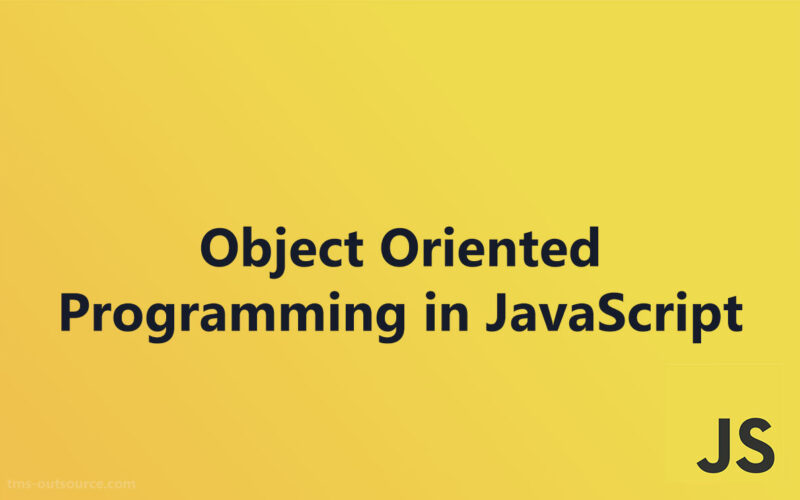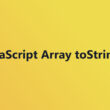Exploring Object Oriented Programming in JavaScript

Diving into Object Oriented Programming in JavaScript unveils a robust framework for crafting scalable and efficient applications.
This programming paradigm, enhanced by ES6 Classes and prototypal inheritance, offers a strategic approach to organizing code through encapsulation, inheritance, and polymorphism.
Perfect for developers aiming to deepen their JavaScript expertise, this article explores the core principles and advanced techniques that make JavaScript uniquely powerful.
Fundamental Concepts of Object Oriented Programming in JavaScript

Classes and Objects
When diving into Object Oriented Programming in JavaScript, it’s crucial to get a firm grasp on classes and objects.
Think of a class as a blueprint for creating objects—a model that defines the characteristics and behaviors (known as properties and methods) that the objects created from it will have.
JavaScript classes, introduced effectively in ES6, provide a much-needed syntactical sugar over the traditional prototype-based approach.
Creating classes in JavaScript is straightforward:
class Car {
constructor(brand) {
this.carname = brand;
}
present() {
return 'I have a ' + this.carname;
}
}
Using objects is just as intuitive. Once a class is defined, objects can be instantiated or created using the new keyword. This process is called instantiation, and the resultant objects are instances of the class.
let myCar = new Car("Ford");
console.log(myCar.present());
Properties and Methods
Properties and methods are foundational to defining the behavior and identity of objects in JavaScript.
Properties are essentially variables contained within the class; they can hold values like strings, numbers, or more complex data structures.
Methods are functions that allow objects to perform actions utilizing their properties or interacting with other objects.
Consider a simple Object literal in JavaScript:
let person = {
name: "John",
age: 30,
greet: function() { return "Hello " + this.name; }
};
In this example, name and age are properties, and greet is a method. Encapsulating data and functions within objects like this not only organizes the code but also encapsulates behavior specific to the data structure, aligning with principles like encapsulation and abstraction in Object Oriented Programming in JavaScript.
By utilizing properties and methods, objects in JavaScript can maintain internal state and expose behavior in a controlled manner.
This approach to coding not only makes the code more reusable and modular but also easier to maintain and debug.
Core Principles of OOP Applied to JavaScript
Encapsulation
Encapsulation is a fundamental concept in object-oriented programming, acting as the corner stone of effective software design.
It refers to the bundling of data (properties) and methods that act on the data into a single unit or class, and restricting the access to some of the object’s components. This makes the concept of encapsulation very useful as it protects the object’s integrity by preventing the outer world from modifying its internal state inappropriately.
In JavaScript, encapsulation can be implemented through functions or closures, using the concept of scopes to protect variables from being accessed directly. Here’s a simple example:
function Car() {
let speed = 120; // speed is encapsulated within the Car function scope
this.getSpeed = function() {
return speed;
};
}
The speed property is not accessible directly from outside the Car class, but can be accessed through the getSpeed method.
Use cases for encapsulation in JavaScript include managing complexity by hiding the internal state of objects and exposing only what is necessary through an interface.
Inheritance
Inheritance in JavaScript allows new objects to take on the properties and methods of existing objects, making it easier to create and maintain an organized codebase.
This is a key principle in Object Oriented Programming in JavaScript, helping in code reusability and scalability.
The syntax in JavaScript for implementing inheritance, particularly with ES6, uses class and extends keywords:
class Vehicle {
constructor(brand) {
this.brand = brand;
}
display() {
return 'This vehicle is made by ' + this.brand;
}
}
class Car extends Vehicle {
constructor(brand, model) {
super(brand);
this.model = model;
}
}
In real-world applications, inheritance can be seen in frameworks and libraries where base components are extended with additional features or functionalities.
Polymorphism
Polymorphism—another core principle in OOP—refers to the ability to present the same interface for differing underlying forms (data types). With polymorphism, the interface segregates from implementation. The methods thus have the same names but can act differently based on which object calls them.
Implementing polymorphism in JavaScript can involve method overriding:
class Animal {
makeSound() {
console.log('Some sound');
}
}
class Dog extends Animal {
makeSound() {
console.log('Bark');
}
}
When a method of a parent class is overridden in a child class, as seen with makeSound(), it enables the Dog instances to use the latest implementation of the method, useful for modifying behavior dynamically.
Abstraction
Abstraction involves simplifying complex systems by modeling classes appropriate to the problem, and working at the most relevant level of inheritance. This helps in reducing complexity and isolates its effects.
In practical applications, abstraction can be employed to create a more generic component in a web application that handles typical functionalities and allows other components to inherit and extend the generic functionalities for specific needs.
For example, in a user interface library, a generic component could handle standard behaviors like initialization and rendering, which can be extended by more specific components such as buttons or sliders, adapting the basic behaviors to particular requirements.
JavaScript-Specific OOP Features
Prototypal Inheritance
One of the unique aspects of Object Oriented Programming in JavaScript is its utilization of prototypal inheritance, contrasting sharply with the classical inheritance model used in many other programming languages.
Classical inheritance is built around classes and the creation of objects from these as instances. Prototypal inheritance, on the other hand, allows objects to inherit directly from other objects.
The advantages of prototypal inheritance in JavaScript are numerous. It offers flexibility in object construction, allowing for easier and more dynamic code reusability.
Objects can be created and given new properties on the fly, without needing a rigid class structure. This can result in more straightforward and lighter-weight code structures, which are easier to understand and manage.
ES6 Classes
Introduced in ECMAScript 2015, ES6 Classes are often referred to as syntactic sugar over JavaScript’s existing prototype-based inheritance, making it more accessible and clearer to use classical inheritance patterns in JavaScript.
Consider the following example:
class Rectangle {
constructor(height, width) {
this.height = height;
this.width = width;
}
area() {
return this.height * this.width;
}
}
let myRectangle = new Rectangle(5, 8);
console.log(myRectangle.area()); // Output: 40
ES6 classes streamline function prototypes into a more traditional class-like syntax, which many developers find cleaner and more logical. They include constructor functions for initiating and inheritance patterns of parent classes.
Object Creation Techniques
JavaScript provides several techniques for creating objects, each useful in various scenarios. Understanding when to use object literals, constructors, or the Object.create() method is crucial for crafting efficient and maintainable code.
- Object literals are the simplest form and are suitable for objects that do not require a blueprint or intricate methods, often used for configuration options.
- Constructors function with a prototype. They are ideal when you need a blueprint for creating similar types of objects and have methods that only differ in the values of their properties.
- The
Object.create()method allows for the creation of objects with specific prototypes. It’s useful for complex inheritance structures in ECMAScript 5 and above, providing a clear mechanism for deriving objects from others without invoking a constructor.
Choosing the right creation technique depends largely on the situation and the specific requirements of the development project or scenario. Each method offers specific pros and cons depending on the complexity and functionality required.
Implementing OOP Concepts in JavaScript
Practical Implementation of Encapsulation
Encapsulation is a crucial aspect of maintaining the integrity and structure within Object Oriented Programming in JavaScript.
It helps in safeguarding an object’s data by preventing external interference and misuse. Techniques to achieve encapsulation include using closure scopes and factory functions.
Here’s a practical example:
function createPerson(name, age) {
let _name = name;
let _age = age;
return {
getName: function() { return _name; },
getAge: function() { return _age; },
setName: function(name) { _name = name; },
setAge: function(age) { _age = age; }
};
}
let person = createPerson('John Doe', 30);
console.log(person.getName()); // John Doe
In this example, _name and _age are not directly accessible from outside the object. The only way to interact with these properties is through the getter and setter methods provided.
This encapsulation model is prevalent in real-life coding scenarios where managing the state of data within objects systematically is crucial for robust software development.
Design Patterns Involving Inheritance and Polymorphism
Design patterns are methodologies to solve common software design issues. Patterns involving inheritance and polymorphism in JavaScript enhance code reusability and flexibility, echoing key OOP principles like design patterns and LSI keywords.
One of the common design patterns is the Prototype Pattern, leveraging JavaScript’s prototypal inheritance:
let car = {
drive() {
return 'Driving';
}
};
let electricCar = Object.create(car, {
charge: {
value: function() { return 'Charging'; }
}
});
console.log(electricCar.drive()); // Driving
console.log(electricCar.charge()); // Charging
In this pattern, electricCar inherits from car and adds its own method charge. This pattern exemplifies polymorphism where electricCar has its unique behavior atop what is inherited.
Such patterns markedly boost not only reusability, as core functionalities are coded once and inherited, but also flexibility, allowing new functionalities to be built upon existing ones.
Class Implementation and Prototypal Behavior in JavaScript
Detailed look at class syntax and behavior
The class syntax in JavaScript, introduced in ES6, has streamlined the way developers implement Object Oriented Programming in JavaScript.
Classes provide a much clearer and simpler syntax to create objects and deal with inheritance, making the code easier to write and maintain.
Here’s a basic example of class syntax:
class Rectangle {
constructor(height, width) {
this.height = height;
this.width = width;
}
area() {
return this.height * this.width;
}
static sayName() {
return 'Rectangle';
}
}
In this setup, constructor serves as a special method for creating and initializing objects created with the class. The area method is an instance method that will be available on all instances of the class. Static methods and properties, like sayName, are called on the class itself, not on instances of the class.
Prototypal Features Unique to JavaScript
JavaScript’s prototypal inheritance model is a fundamental difference from the classical inheritance models found in many other programming languages. Every object has a private property which holds a link to another object called its prototype.
The prototype chain is a powerful feature of JavaScript. Each object can have a prototype from which it can inherit properties and methods. Here’s how it works:
let animal = {
makesSound: true,
sound: 'Generic Sound'
};
let dog = Object.create(animal, {
sound: { value: 'Bark' }
});
console.log(dog.makesSound); // true
console.log(dog.sound); // 'Bark'
In this example, dog overrides the sound property from its prototype animal, but still inherits the makesSound property.
This capability allows for a very flexible and dynamic approach to inheritance, where objects can not only inherit properties but also override them without affecting the original prototype.
This unique behavior enables developers to modify or extend objects as needed dynamically, providing flexibility in how inheritance can be utilized to structure and organize code efficiently.
FAQ On Object Oriented Programming In JavaScript
What Exactly Is Object Oriented Programming in JavaScript?
Object Oriented Programming (OOP) in JavaScript involves using objects and classes to create reusable code components.
This methodology encapsulates data and functions into models, streamlining code management and enhancing scalability, especially significant in web development where dynamic user interfaces predominate.
How Do You Create a Class in JavaScript?
Classes in JavaScript are blueprints for creating objects and are defined using the class keyword. A simple class includes a constructor and can also contain properties and methods. For instance, creating a class named Car that holds data about different cars is straightforward in ES6 syntax.
Can You Explain Inheritance in JavaScript?
Inheritance allows a class to inherit properties and methods from another class. In JavaScript, this is achieved using the extends keyword. Child classes inherit features from parent classes but can also have their own unique attributes and behaviors, enabling both reuse and customization.
What Is Prototypal Inheritance?
JavaScript is unique because it utilizes prototypal inheritance instead of classical inheritance. Objects can directly inherit properties from other objects, skipping the formal class system. This model is flexible and less rigid, allowing objects to be extended on the fly.
How Does Encapsulation Work in JavaScript?
Encapsulation is the practice of bundling the data (properties) and code (methods) that operate on the data into single units, or classes, and restricting access to some of the object’s components.
This concept is implemented in JavaScript through closures or more formally through class constructors and methods.
What Are Some Common Design Patterns in JavaScript?
Design patterns are tried and tested solutions to common problems. In JavaScript, popular patterns include the Module, Observer, and Singleton.
These patterns enhance code comprehensibility and efficiency, making it easier to manage large-scale applications by providing a structured approach to code organization.
How Do You Implement Polymorphism in JavaScript?
Polymorphism in JavaScript can be implemented by method overriding. Child classes can override a method inherited from a parent class to perform different actions, underlying an indispensable feature for flexible and dynamic code behaviors which react based on different inputs or states.
What Are Static Methods and Properties?
Static methods and properties are associated with the class, rather than instances of the class. In JavaScript, you use the static keyword to define them. They are typically used for functionality that belongs to the class but not necessarily any single instance.
How Is Abstraction Utilized in JavaScript?
Abstraction in JavaScript helps in hiding the complex reality while exposing only the necessary parts. It is achieved by creating objects that show high-level interfaces to the user.
These interfaces can interact internally with more complex code hidden away from sight, simplifying interactions for both developers and end users.
What Is the Role of Constructors in JavaScript Classes?
Constructors are special functions in a class that are called when new objects are created from a class. They typically initialize properties and can also call methods needed to set up new instances. This setup is crucial for preparing new objects with individual states or requisite configurations.
Conclusion
Diving into Object Oriented Programming in JavaScript unveils a transformative approach to coding that tailors design patterns, prototypes, and classes for robust and scalable applications.
By harnessing principles like encapsulation, inheritance, and polymorphism, developers can construct more maintainable and error-resistant software.
Whether employing prototypal features unique to JavaScript or innovatively using ES6 classes, this programming paradigm shifts how we architect web solutions, making it an indispensable skill for crafting sophisticated digital experiences.
Embrace the sophistication it brings to software development to truly leverage the power of modern JavaScript.
If you liked this article about Object Oriented Programming in JavaScript, you should check out this article about JavaScript Comparison Operators.
There are also similar articles discussing JavaScript Logical Operators, JavaScript Bitwise Operators, JavaScript Ternary Operators, and JavaScript Comma Operators.
And let’s not forget about articles on JavaScript Unary Operators, JavaScript Relational Operators, JavaScript BigInt Operators, and JavaScript String Operators.
- Converting Arrays with JavaScript Array toString() Method - June 27, 2024
- 4 Best Free AI Coding Tools for Developers - June 27, 2024
- Personalize Your Chat: Creative Apps Like Bitmoji - June 26, 2024








